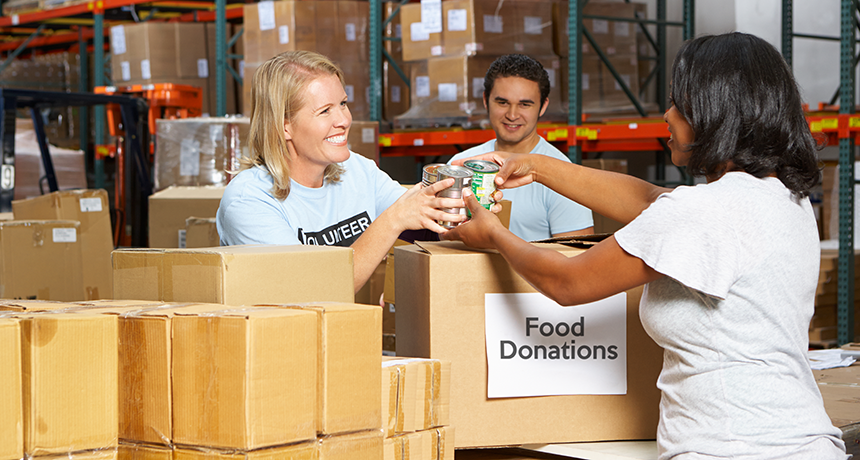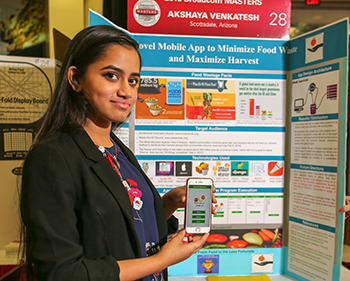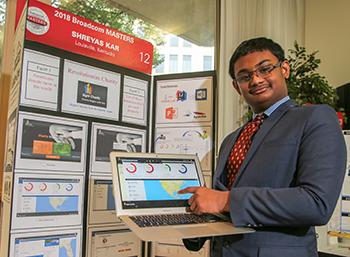New apps match donated items with people in need
Teens developed them to aid the hungry or people suffering in the wake of major disasters

A California teen has developed an app that could better match food donations for the needy with food banks and other charities.
monkeybusinessimages/iStockphoto
By Sid Perkins
WASHINGTON, D.C. — The internet often does a good job of playing matchmaker. Potential buyers can find sellers. Dating websites help guys meet girls, and girls meet guys. Now, two teens have come up with apps to link donors of aid with people who need assistance.
Akshaya Venkatesh, 14, from Scottsdale, Ariz., wants to help the hungry. Last year, this 9th-grader attended the BASIS Scottsdale school. Shreyas Kar, 13, a 9th-grader who last year attended Meyzeek Middle School in Louisville, Ky., wants to aid people in dire straits after natural disasters. These might include floods and hurricanes. Both young researchers showcased the results of their computer programming skills here, last month. They were among 30 finalists at the eighth annual Broadcom MASTERS competition.
The event brings together U.S. middle-school students each year to tackle team challenges. (MASTERS stands for Math, Applied Science, Technology and Engineering for Rising Stars.) The program was created by Society for Science & the Public, which publishes Science News for Students and this blog. The Broadcom Foundation, headquartered in Irvine, Calif., sponsors the event.
Unlike most science competitions, only a small share of a finalist’s overall score is based on their qualifying science-fair research from the previous year. Roughly four-fifths of the students’ score reflects the creativity they showed and how well they worked to solve research challenges as part of a team.
Helping the hungry
A lot of food ends up in the trash. If that seems wasteful, that’s because it is. In the United States, more than 38 million tons of food gets thrown away each year. That’s according to a 2016 study by the U.S. Environmental Protection Agency. A good-sized fraction of this waste consists of spoiled vegetables and fruit, notes Akshaya. “Even if something has a small brown spot on it, people will throw it away,” she says.
This teen had been volunteering to help the hungry. She collects fruit from neighbors’ trees, for instance, and then carries it to charities that feed the needy. “One family donates their lemons,” she says. “Another one donates their oranges.”

A couple of years ago, Akshaya decided to use her computer programming skills to help even more. “I love programming,” she notes. “People think it’s super nerdy, but I like it. It’s like a game.”
The app she created lets people log in and list the type of produce that they have: vegetables, fruit, whatever. They can also list other information, including their address. Then, any charity worker that logs in to the app can see what’s available. Users can contact the donors to arrange for workers to harvest or pick up the fresh produce.
One non-profit group has helped Akshaya test her app. She hopes to expand use of this program soon. If that happens, more organizations, including local food banks, should be able to receive donations of fresh food that might otherwise go to waste.
Akshaya’s app might help the world in other ways, too. Many crops are kept hydrated by feeding them irrigation water. If any of the harvested crops then go to waste, that irrigation water will also have been wasted, the teen notes. And then there is the climate impact of wasted food. When produce rots, it releases carbon dioxide and methane into the atmosphere. Emissions from all the world’s wasted food each year adds up to about 4.4 billion metric tons of CO2, Akshaya points out. That figure comes from a 2011 study by the United Nations’ Food and Agriculture Organization. If the emissions from all rotting food were tallied as if they came from one country, only the United States and China would send more human-caused greenhouse gases into the air each year.
So, the less food that is wasted, Akshaya explains, the better it is for the environment.
After disasters strike
When hurricanes, fires or floods devastate an area, large numbers of people can suddenly become very needy. People, companies and organizations often rush in to help. Big problems can arise, though, in linking up these donors and the people who need their aid. That’s where apps such as the one being created by Shreyas might help.

Hurricane Harvey hit Houston, Texas, in August 2017. Storm damage there was followed by severe flooding. The next month, Hurricane Maria slammed into Puerto Rico. For much of a year, many residents of that U.S. island had no electricity. Shreyas saw that many people wanted to help end the suffering. “But many times, the donations didn’t match the need,” he notes. Right after such disasters, some of the greatest need is for basic items. This might be water, soap and toiletries, he points out. So he developed an app where a community could report what it needs.
First, he talked to people who work with charities to get their ideas. Then, he came up with ideas about what the pages in his app should look like. After that, he started programming. Finally, he ran a few tests. And they were largely successful, he notes.
Once logged in, someone “should be able to identify the most needed items,” the teen says, “and then donate them.” Donors can even schedule when and where to drop off their items. Or, charities that need aid could log into the app and see what donations are available. Then they could contact the donors to arrange for a pickup. As matches are made, the app could automatically update the inventory of available goods, Shreyas explains.
He has shared the app with some charities in his home town. He hopes the matchmaker app will become increasingly useful. For now, this teen is studying to become a mathematician. “I want to do more research and find new ways to solve problems,” he says.
The future would seem to hold many problems for young researchers like Akshaya and Shreyas to solve. Indeed, hunger and natural disasters will likely challenge humanity for decades to come.







